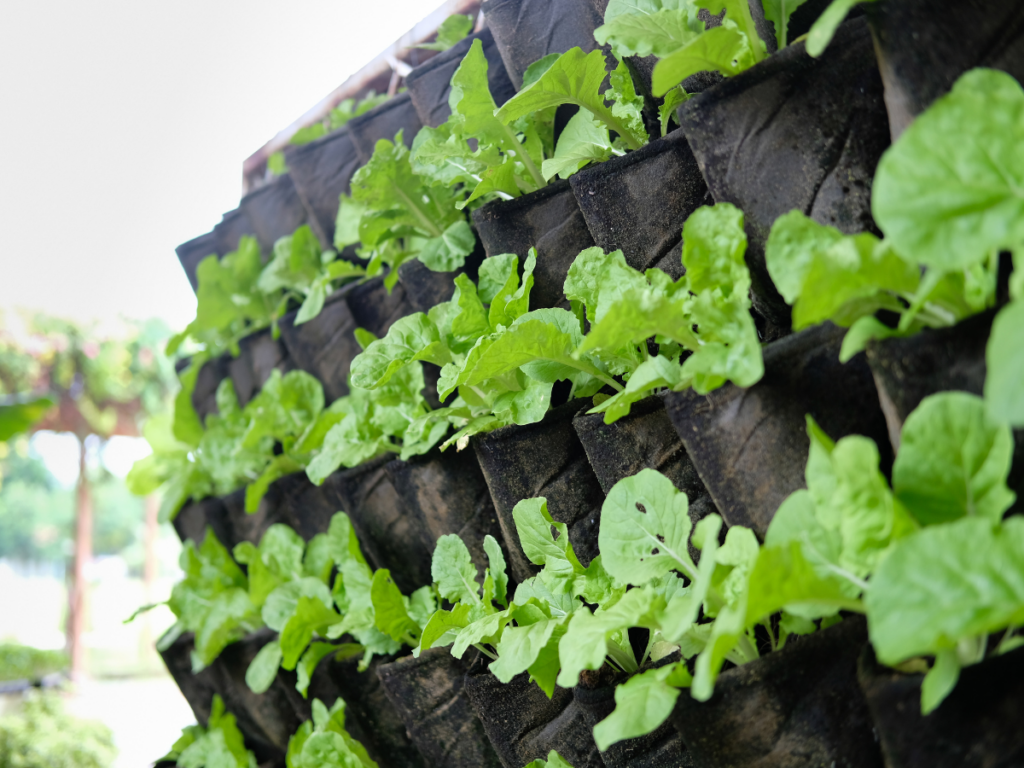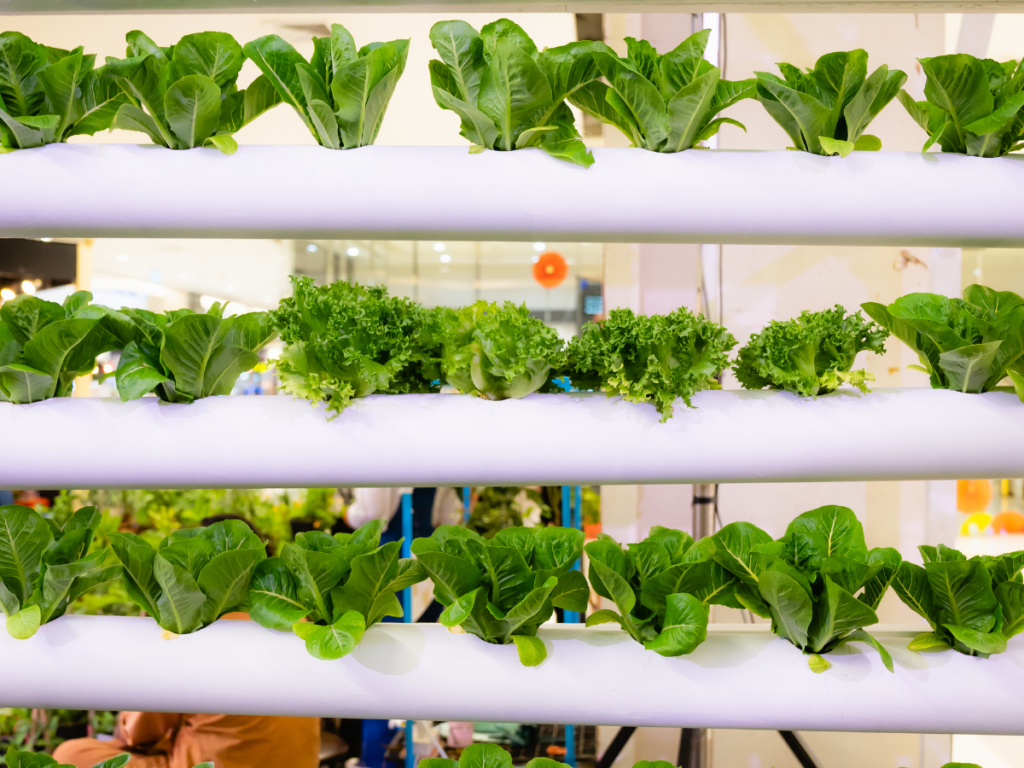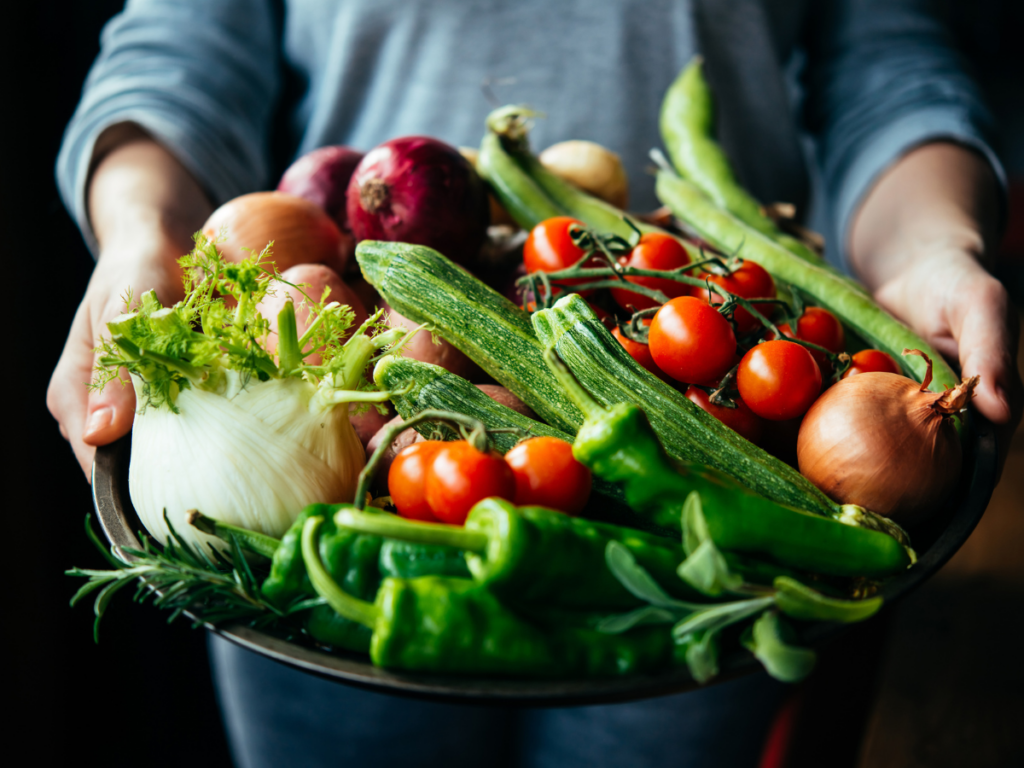Vertical Gardening: How to Grow More Vegetables in Less Space
With urbanization on the rise and outdoor space becoming increasingly limited, vertical gardening has emerged as a practical and efficient solution for growing vegetables in small areas. Whether you have a tiny balcony, a small backyard, or even an indoor space, vertical gardening allows you to maximize your garden’s productivity while enhancing the aesthetic appeal of your surroundings.
In this blog post, we’ll explore what vertical gardening is, its benefits, the best vegetables to grow, and how to set up your own vertical garden.
What is Vertical Gardening?

Vertical gardening is a space-saving gardening technique where plants are grown upwards instead of spreading out on the ground. This method uses trellises, wall-mounted planters, hanging baskets, and stacked containers to create a thriving vegetable garden in a compact space.
Traditionally used for ornamental plants, vertical gardening is now gaining popularity for growing fresh vegetables, herbs, and fruits in small homes, apartments, and urban environments.
Benefits of Vertical Gardening
Vertical gardening offers numerous advantages, making it an ideal solution for home gardeners looking to grow more in less space.
1. Maximizes Space Efficiency
One of the biggest advantages of vertical gardening is that it allows you to make the most of limited space. Instead of growing vegetables in a traditional spread-out layout, vertical gardening utilizes walls, fences, and balconies to grow upwards.
🔹 Perfect for: Small balconies, patios, rooftops, and indoor gardens.
2. Improves Air Circulation and Sunlight Exposure
Since plants are elevated, they receive better airflow and even sunlight distribution, reducing the risk of fungal diseases and pest infestations.
🔹 Tip: Position your vertical garden where it gets at least 6 hours of sunlight daily for optimal vegetable growth.
3. Reduces Weeds and Pests
By elevating your vegetables off the ground, weeds have fewer opportunities to grow, and pests such as slugs and rodents are less likely to attack your crops.
🔹 Solution for: People who want to minimize weeding and pesticide use in their gardens.
4. Easier to Maintain and Harvest
No more bending or kneeling! Vertical gardens make it easier to water, prune, and harvest your crops without straining your back.
🔹 Great for: Elderly gardeners or individuals with mobility issues.
5. Enhances Aesthetics and Urban Gardening
Vertical gardens add a beautiful, lush green element to homes and outdoor spaces. Whether you use hanging planters, trellises, or stacked containers, they provide an eye-catching and space-efficient way to beautify walls and balconies.
🔹 Best for: Urban dwellers who want to incorporate greenery into their living space.
Best Vegetables for Vertical Gardening

Not all vegetables are suited for vertical gardening, but many thrive when given the right support. Here are some of the best vegetables to grow in a vertical garden:
1. Climbing Vegetables (Vining Crops) 🌿
These plants naturally grow upwards and require trellises, stakes, or cages for support.
✔️ Tomatoes – Need a sturdy trellis or cage for support.
✔️ Cucumbers – Thrive on vertical supports and produce abundant fruit.
✔️ Pole Beans & Peas – Fast-growing climbers that need trellises.
✔️ Zucchini & Squash – Can be trained to grow vertically on a trellis.
Use a strong trellis to support heavy vegetables like squash and tomatoes.
2. Leafy Greens (Compact and Hanging Varieties) 🥬
These plants don’t climb but can be grown in hanging baskets, wall planters, or stacked pots.
✔️ Lettuce & Spinach – Perfect for vertical planters.
✔️ Kale & Swiss Chard – Thrive in tiered gardens.
✔️ Arugula & Mustard Greens – Grow well in wall-mounted planters.
Harvest outer leaves first to encourage continuous growth.
3. Herbs (Great for Small Spaces & Indoor Gardens) 🌿
Herbs grow well in hanging baskets, wall planters, and mason jar gardens.
✔️ Basil – Loves sunlight and works well in hanging planters.
✔️ Mint – Grows fast but should be contained to prevent overgrowth.
✔️ Thyme, Oregano & Rosemary – Thrive in wall-mounted herb gardens.
✔️ Cilantro & Parsley – Grow well in tiered container gardens.
Tip: Keep herbs near your kitchen window for easy access when cooking.
How to Set Up a Vertical Vegetable Garden
Creating a vertical garden is easier than you think! Here’s a step-by-step guide to get started.
Step 1: Choose the Right Location
Select a spot that receives at least 6 hours of sunlight per day. Good locations include:
✔️ Balconies, patios, and fences
✔️ Sunny walls or trellises
✔️ Indoor spaces with good lighting
Tip: If you’re gardening indoors, consider LED grow lights for sufficient plant growth.
Step 2: Select the Right Vertical Gardening Structure
Depending on your space and budget, choose a structure that suits your gardening needs.
✔️ Wall Planters – Great for herbs and leafy greens.
✔️ Hanging Baskets – Ideal for small vegetables and trailing herbs.
✔️ Stacked Containers (Tower Gardens) – Perfect for growing multiple plants in a small space.
✔️ Trellises and Cages – Essential for climbing vegetables like tomatoes and beans.
🔹 Tip: Use sturdy materials like wood, metal, or recycled pallets for durability.
Step 3: Use High-Quality Soil & Compost
For vertical gardening, use lightweight, nutrient-rich soil that promotes good drainage.
✔️ Mix potting soil with compost for better nutrients.
✔️ Add mulch to retain moisture and prevent soil erosion.
Tip: Choose a well-draining soil mix to avoid root rot in vertical containers.
Step 4: Set Up an Efficient Watering System
Since vertical gardens can dry out quickly, it’s important to ensure consistent watering.
✔️ Drip Irrigation – Best for watering stacked and hanging plants efficiently.
✔️ Self-Watering Planters – Great for maintaining consistent moisture.
✔️ Hand Watering – Use a watering can with a long spout to reach higher plants.
Tip: Water early in the morning to prevent evaporation.
Step 5: Maintain & Monitor Your Garden
✔️ Prune and train climbing plants to grow properly.
✔️ Check for pests regularly, especially in compact gardens.
✔️ Harvest vegetables frequently to encourage new growth.
Tip: Rotate crops each season to maintain soil health and prevent disease buildup.
Final Thoughts: Growing More with Less Space

Vertical gardening is a smart, efficient, and sustainable way to grow fresh vegetables in small spaces. Whether you’re an urban dweller, a beginner gardener, or someone looking to maximize food production, this gardening technique allows you to enjoy homegrown produce without needing a large garden. By selecting the right plants, using innovative vertical structures, and following best practices, you can grow a thriving vegetable garden no matter how limited your space is.


